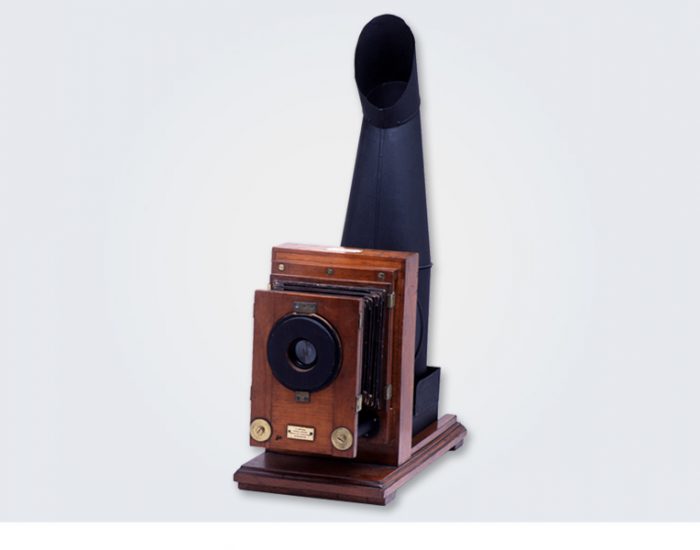
The Cantilever
Extension device desinged and manufactured by William Hume1890 Wood, metal and glass
Registry number: MG 555
Photography: The Cantilever
Unknown photographer
© Museo del Gas de la Fundación Gas Natural Fenosa, 2017
The Cantilever was a device for enlarging photos designed and manufactured by inventor William Hume, in Edinburgh, in 1890. This gas appliance, which is preserved in the Gas Natural Fenosa Foundation Gas Museum collection, enabled images to be enlarged to project them onto a surface or to print them on photography paper. The Cantilever was used in the fields of photography, art, design, architecture, engineering and others.
The appearance of the device is very similar to the old photograph cameras. However, the process of taking a picture was the complete opposite. The Cantilever was made of an opaque wooden box that contained a gas burner and a chimney for the smoke to escape, a glass condenser that collected the light and spread it evenly over the surface of the image to be enlarged, and an optical lens that the image was projected through. In order to use it, the glass sheet needed to be combined with the negative or positive photographic image that you wanted to enlarge. Using a bellows, the image was enlarged to desired size and sent towards the optical lens, which sent the image to the shutter to project it. The name of the appliance comes from the word “fuelle”, in English “cantilever”.